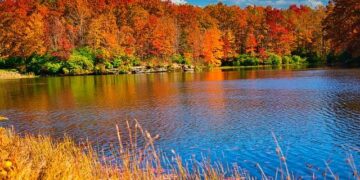The Significance of Prescribed Burns in Florida’s Ecosystem
Understanding Controlled Burns
Prescribed burning, commonly referred to as controlled burning, is a vital practice in maintaining the health of Florida’s diverse ecosystems. This technique involves intentionally setting fire to specific areas under carefully monitored conditions. By doing so, it helps to manage and rejuvenate natural habitats that may be overgrown or under threat.
Benefits for Natural Landscapes
Promoting Native Flora
One of the primary advantages of these burns is their role in encouraging the growth of native plant species. Many indigenous plants are adapted to flames, relying on periodic fires for germination and growth. This process not only preserves biodiversity but also enhances the resilience of local ecosystems against invasive species.
Reducing Hazardous Fuel Loads
Another critical aspect is fire hazard mitigation. In areas with significant vegetation buildup, uncontrolled wildfires can pose serious risks to both human communities and wildlife. Controlled burns help eliminate excess underbrush and dead plant material, significantly lowering the chances of catastrophic fires.
Ecological Dynamics
Habitat Restoration
Controlled burns play a crucial role in habitat restoration for numerous species within Florida’s varied landscapes—from wetlands to pine forests. Species such as the gopher tortoise and certain bird populations depend on open environments created by these prescribed fires for their survival.
Soil Health Improvement
In addition to supporting wildlife, controlled burns contribute positively to soil enrichment. The ashes from burned vegetation act as a natural fertilizer containing essential nutrients that promote soil vitality and enhance water absorption capabilities.
Historical Context and Current Usage
Historically used by Indigenous peoples for millennia as a land management strategy, prescribed burning has recently gained renewed attention due to its ecological benefits amid climate change threats. In recent years, experts have noted an increase in land management programs emphasizing this practice across various regions—approximately 80% more acres were treated with controlled burns compared to previous decades globally.
Conclusion
controlled burns are indispensable tools for promoting ecological balance within Florida’s natural environment. By fostering native plant life, mitigating wildfire risks through fuel load reduction, boosting animal habitats alongside improving soil composition—these carefully managed fires underscore their importance in sustainable environmental practices today.































